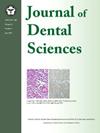A scientometric study on research trends and characteristics of discoid lupus erythematosus
IF 3.4
3区 医学
Q1 DENTISTRY, ORAL SURGERY & MEDICINE
引用次数: 0
Abstract
Background/purpose
Discoid lupus erythematosus (DLE) serves as an interdisciplinary disease involved in dermatology and stomatology in many cases. The purpose of this study was to analyze the scientometric characteristics and research trends of DLE.
Materials and methods
All the papers on DLE were comprehensively retrieved from the Scopus database. Discipline comparison (dermatology versus others) and chronological comparison (before 2005 versus 2005–2024) were performed, so that the number of papers can be to some extent compared in the analysis.
Results
Among all the 1239 papers on DLE, 738 (59.6 %) were published by dermatologists. Diagnosis aspect, skin manifestation, facial dermatoses, scar formation, hair loss, epiluminescence microscopy, dermoepidermal junction, arthralgia, anamnesis, young adult, Ro antibody, and dermoscopy were distinctive keywords for dermatologists; While Mouth mucosa, mouth diseases, lip neoplasms, eyelid disease, blepharitis, conjunctivitis, autoantibody, blood, neutrophil, fever, sex difference, preschool child were distinctive keywords for other scholars. Treatment response, dapsone, etretin, clobetasol, mycophenolate mofetil, glucocorticoid, triamcinolone, and drug safety were therapeutic keywords for dermatologists. Whereas quinacrine, alpha tocopherol, hydrocortisone, adverse drug reaction were therapeutic keywords for other scholars. The trend has changed to complication, disease duration, young adult, dermatitis, pruritus, antibody titer, Ro antibody, anamnesis, dermoscopy, arthralgia, dermoepidermal junction, keratosis, and African American, drug withdrawal, tacrolimus, mycophenolate mofetil, etretin, clobetasol, cyclophosphamide, and drug safety after 2005.
Conclusion
This scientometric study elucidated the current scenario and research trends of DLE, and would help in improving in reciprocal collaboration and communication for investigations on this disease.
求助全文
约1分钟内获得全文
求助全文
来源期刊

Journal of Dental Sciences
医学-牙科与口腔外科
CiteScore
5.10
自引率
14.30%
发文量
348
审稿时长
6 days
期刊介绍:
he Journal of Dental Sciences (JDS), published quarterly, is the official and open access publication of the Association for Dental Sciences of the Republic of China (ADS-ROC). The precedent journal of the JDS is the Chinese Dental Journal (CDJ) which had already been covered by MEDLINE in 1988. As the CDJ continued to prove its importance in the region, the ADS-ROC decided to move to the international community by publishing an English journal. Hence, the birth of the JDS in 2006. The JDS is indexed in the SCI Expanded since 2008. It is also indexed in Scopus, and EMCare, ScienceDirect, SIIC Data Bases.
The topics covered by the JDS include all fields of basic and clinical dentistry. Some manuscripts focusing on the study of certain endemic diseases such as dental caries and periodontal diseases in particular regions of any country as well as oral pre-cancers, oral cancers, and oral submucous fibrosis related to betel nut chewing habit are also considered for publication. Besides, the JDS also publishes articles about the efficacy of a new treatment modality on oral verrucous hyperplasia or early oral squamous cell carcinoma.
 求助内容:
求助内容: 应助结果提醒方式:
应助结果提醒方式:


